Walking into Siena’s Piazza del Campo feels like stepping into a living postcard. I was instantly captivated by its unusual shell-shaped design. The Piazza’s unique scallop shell layout, paved with red brick divided by white travertine stone lines, makes it one of Tuscany’s most architecturally distinctive public spaces.
This medieval marvel spans 333 meters in circumference and serves as the beating heart of Siena. The curved Palazzo Pubblico and its striking Torre del Mangia tower follow the gentle slope of the piazza, creating a harmonious relationship between the buildings and the open space.
When I visited, locals and tourists alike gathered here, sitting directly on the warm bricks and soaking in the atmosphere.
What makes this square truly special is how it remains the center of Sienese life after nearly 700 years. I’ve watched people enjoy gelato here on sunny afternoons and seen the square transform during the famous Palio horse race. The UNESCO-recognized gothic architecture surrounding the piazza perfectly frames this shell-shaped wonder, creating a space that feels both monumental and surprisingly intimate at the same time.
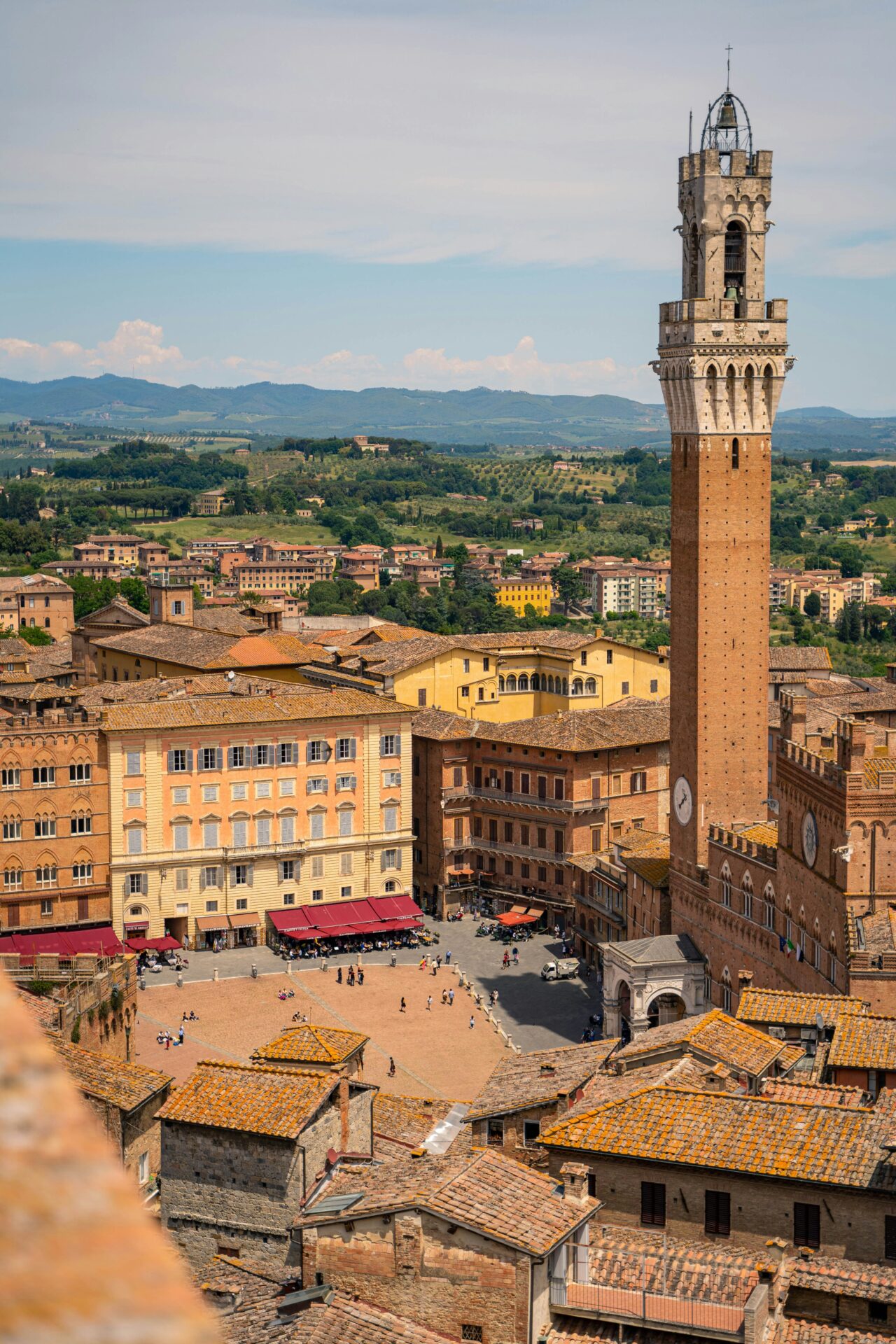
Laying the Groundwork: Siena’s Historical Tapestry
Siena’s rich history shaped the creation of its remarkable shell-shaped square, making it not just an architectural marvel but a living testament to medieval civic pride.
The Origins of Siena’s Splendor
Siena began as a small Etruscan settlement before growing under Roman rule. The city really came into its own during the 12th and 13th centuries when it became a wealthy banking center and rival to Florence.
This prosperity fueled Siena’s golden age of development. Local leaders wanted to create a central gathering space that would reflect the city’s importance. The Piazza del Campo emerged from this vision around 1300.
I’m always struck by how the square’s unique shell shape wasn’t random but carefully planned. The design represented unity and community in a time when many Italian cities were divided by conflict.
The sloping surface drains to a central point, showing remarkable engineering for medieval times. This practical feature helped manage rainwater while creating the distinctive shell appearance we admire today.
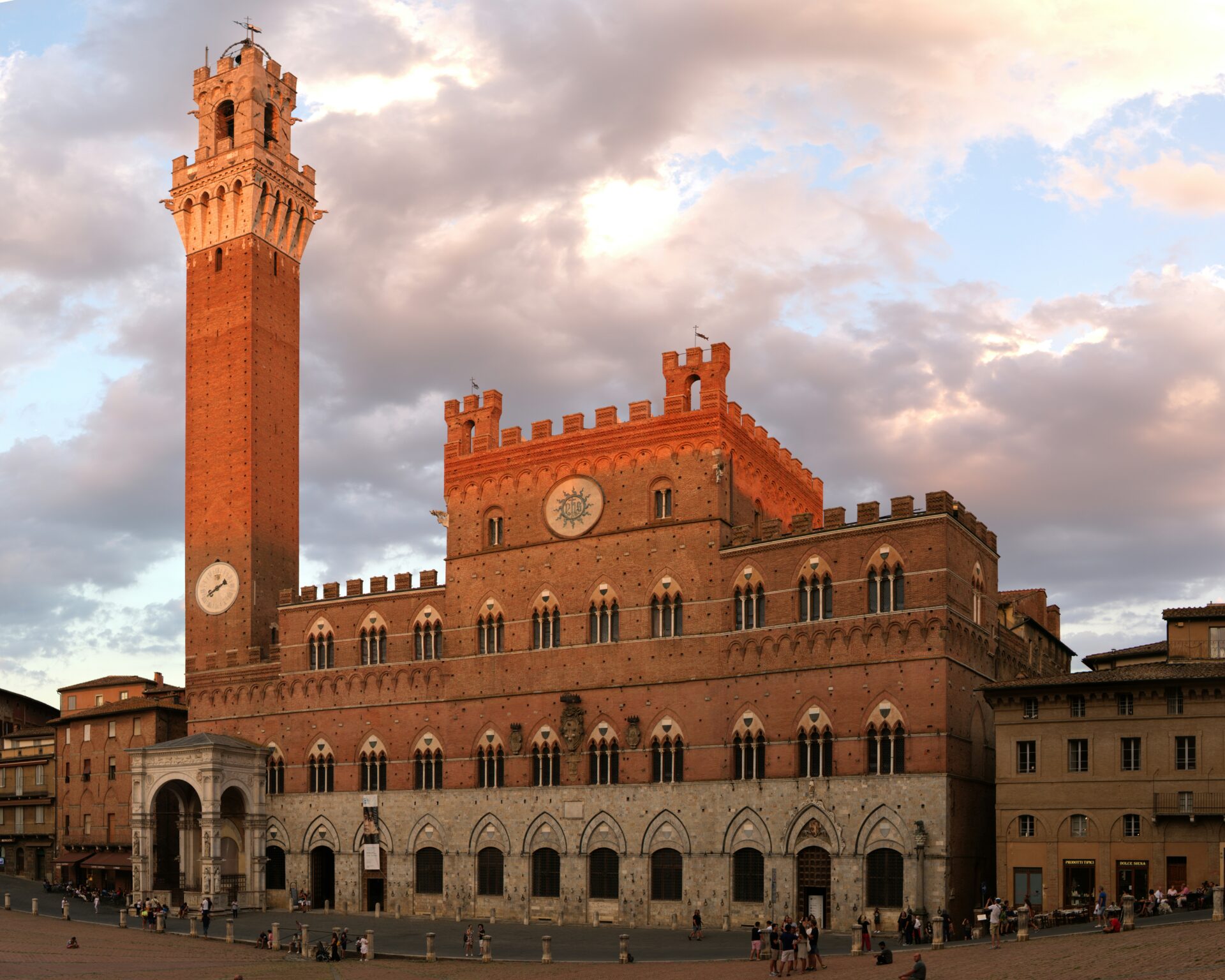
A Glimpse into Medieval Life
Walking across the Piazza del Campo, I can almost hear the echoes of medieval life. This UNESCO World Heritage Site wasn’t just pretty—it was the beating heart of Siena’s civic activities.
Citizens gathered here for important announcements, celebrations, and the famous Palio horse race that still runs today. The square faced the Palazzo Pubblico (town hall), symbolizing that government existed in the open, under citizens’ watchful eyes.
The brick paving, divided into nine sections representing Siena’s ruling Council of Nine, remains largely unchanged since medieval times. I find it amazing that these same stones have witnessed centuries of daily life.
Markets, festivals, and public executions all took place here. The historic center’s layout, with streets radiating from the Piazza, shows how central this space was to everyday medieval life.
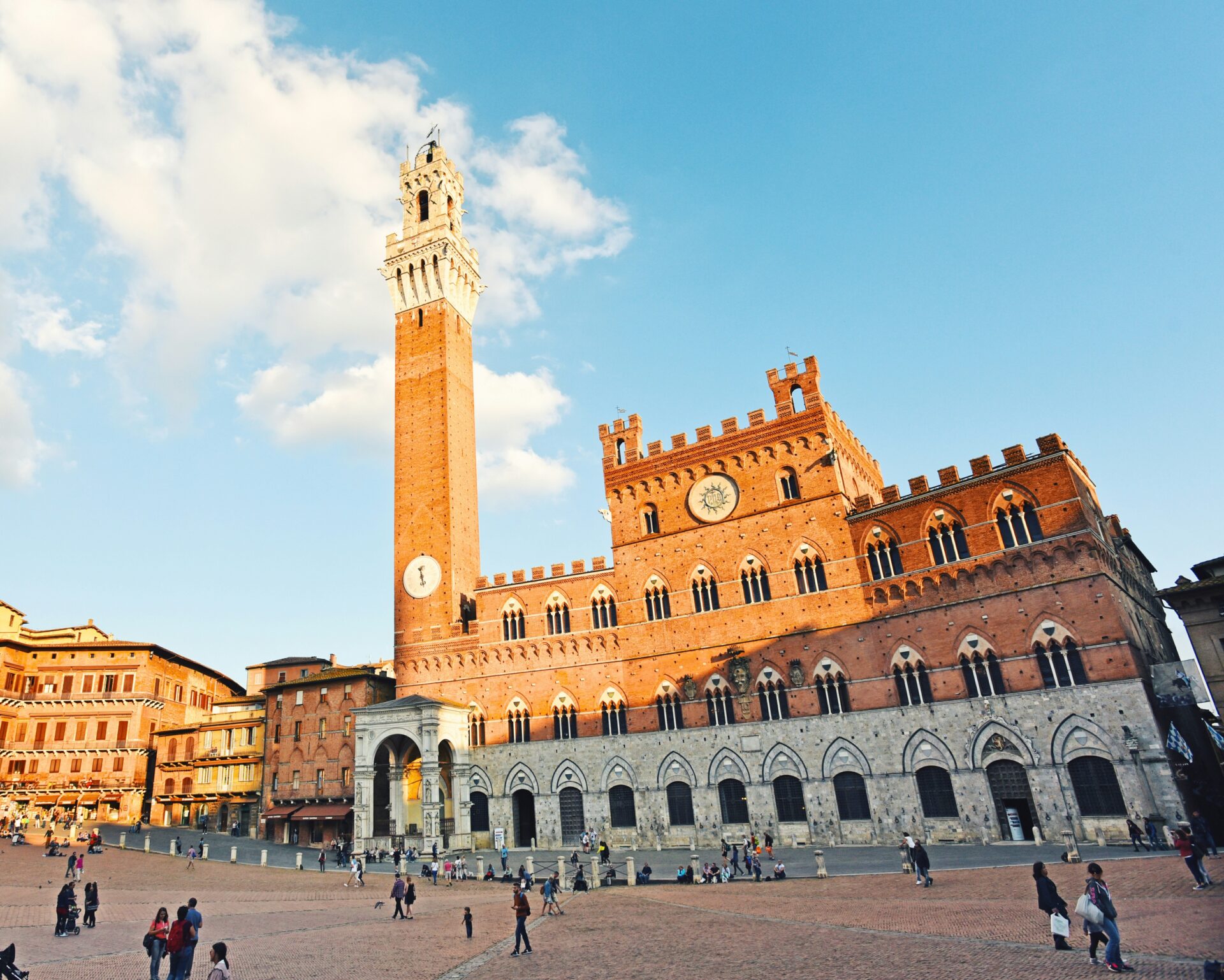
Piazza del Campo: The Heartbeat of Siena
The magnificent Piazza del Campo serves as the central gathering place in Siena, Italy, with its unique shell-shaped design making it one of Europe’s most remarkable medieval squares.
Architectural Innovation and Social Hub
I was immediately struck by Piazza del Campo’s distinctive shell shape when I first visited. This gorgeous square spans 333 meters in circumference and features a stunning red brick pavement arranged in a fishtail design. Ten lines of white travertine stone create the shell-like pattern that makes this space truly unique.
The curved façade of Siena’s town hall cleverly mirrors the outward curve of the piazza, showing how thoughtfully this space was designed. As a UNESCO World Heritage Site, the square represents the pinnacle of medieval urban planning.
Walking across the piazza, I noticed how it slopes gently toward the center, creating a natural amphitheater effect. This clever design encourages people to gather and socialize. Locals and tourists alike sit along the edges, enjoying gelato or coffee while watching the world go by.
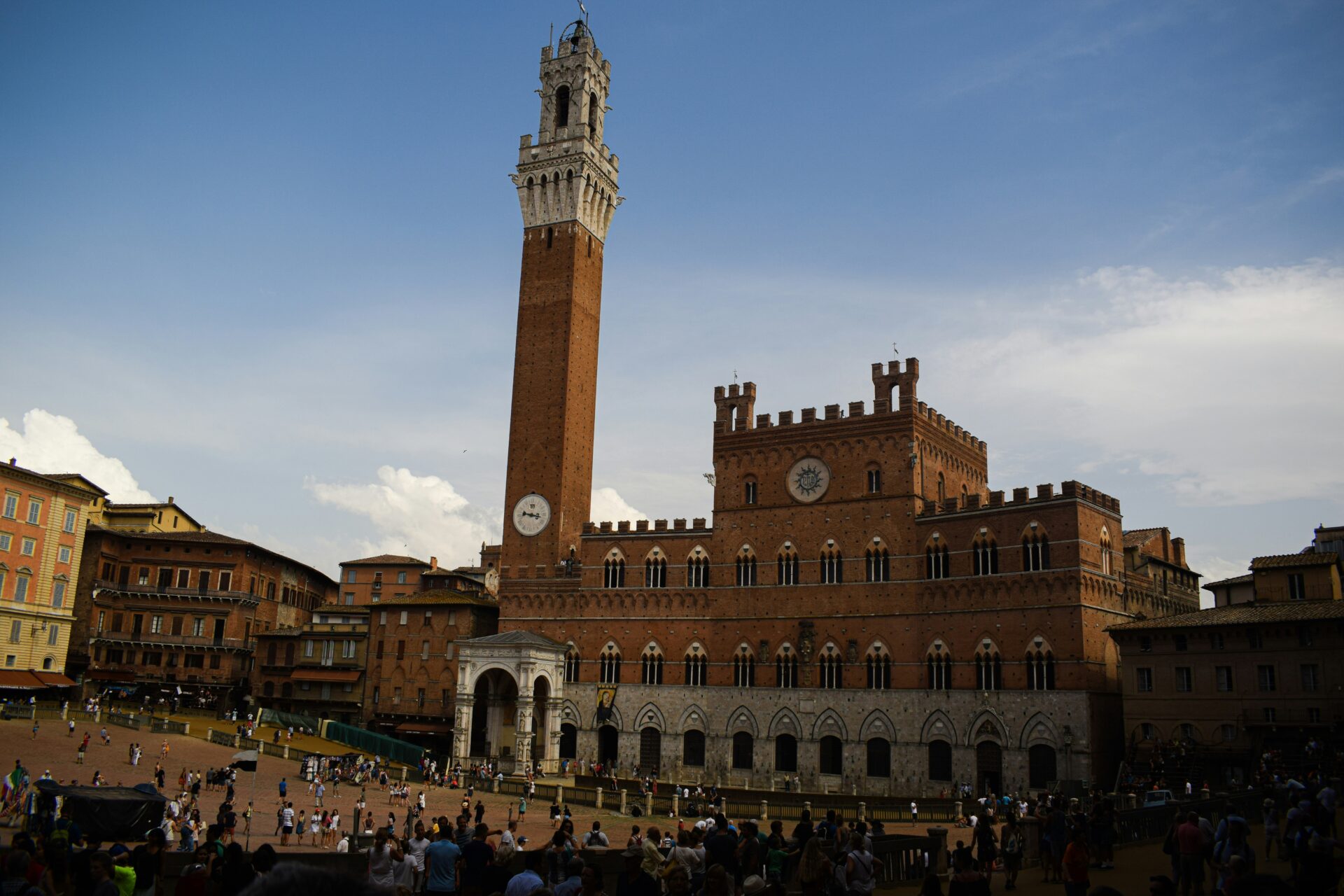
The Palio: A Tradition of Horse Racing
The Palio horse race transforms this peaceful square into an electrifying arena twice each year. I was fortunate to witness this centuries-old tradition where ten horses and riders represent different districts of the city.
The race circles the outer edge of the piazza while thousands of spectators pack the center. The atmosphere is absolutely electric—I’ve never experienced anything quite like it! Each district displays their colorful flags and emblems with intense pride.
The tradition dates back to medieval times and lasts just 90 seconds, but the preparation and celebration continue for days. Riders race bareback around the square’s perimeter at breakneck speeds, navigating the tight corners with remarkable skill.
Victory brings tremendous honor to the winning district, whose members celebrate with elaborate feasts and parades through the streets of Siena.
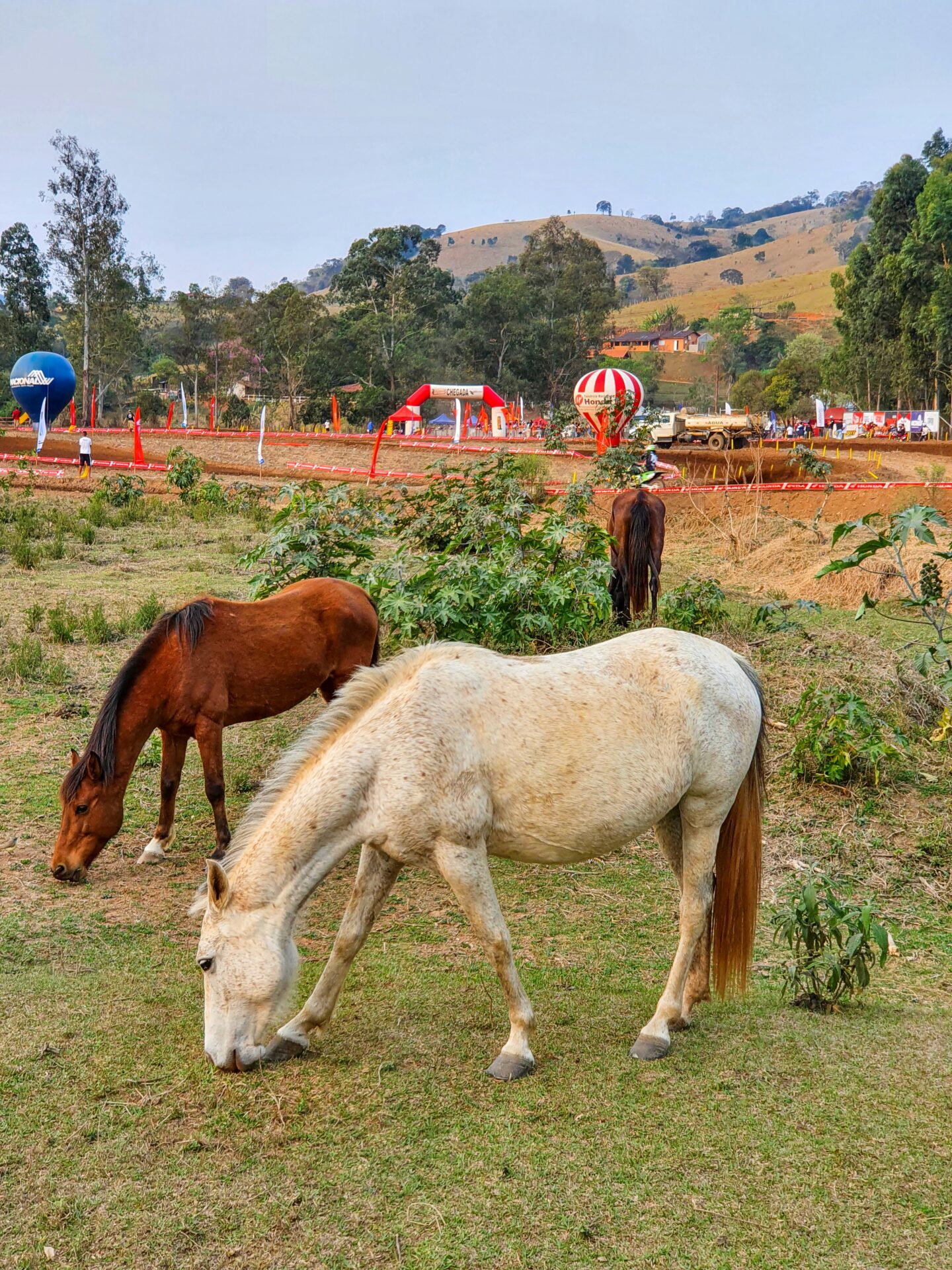
Monuments of Power and Piety
Siena’s stunning architecture showcases the city’s medieval wealth and religious devotion through two magnificent structures that dominate the landscape.
Palazzo Pubblico: Siena’s Civic Pride
The Palazzo Pubblico stands proudly at the bottom of the shell-shaped Piazza del Campo. Built between 1297 and 1310, this gothic masterpiece served as the seat of the Republic of Siena’s government.
I was mesmerized by the Torre del Mangia, the palace’s striking 102-meter tower that soars above the square. Climbing its 400 steps rewards visitors with breathtaking panoramic views of the city and surrounding countryside.
Inside, I discovered Ambrogio Lorenzetti’s famous fresco cycle “The Allegory of Good and Bad Government.” These remarkable 14th-century paintings show how leadership affects city life – a revolutionary political statement in art form.
The palace’s façade of red brick and travertine marble perfectly complements the piazza’s unique shape. It remains Siena’s town hall today, maintaining its civic function for over 700 years.

Siena Cathedral: A Duomo’s Tale
Just a short walk from the Campo, I found the magnificent Siena Cathedral (Duomo). Its striking black and white marble stripes instantly caught my eye – the colors representing the black and white horses of Siena’s legendary founders.
Construction began in the 13th century, with plans to create the largest cathedral in the world. The Black Death of 1348 halted this ambitious expansion.
Inside, I marveled at masterpieces including Nicola Pisano’s intricately carved pulpit and the spectacular mosaic floor with 56 panels depicting biblical and allegorical scenes.
The Piccolomini Library dazzled me with vibrant frescoes by Pinturicchio celebrating Pope Pius II. This cathedral stands as a testament to Siena’s religious devotion and artistic achievement during its golden age.
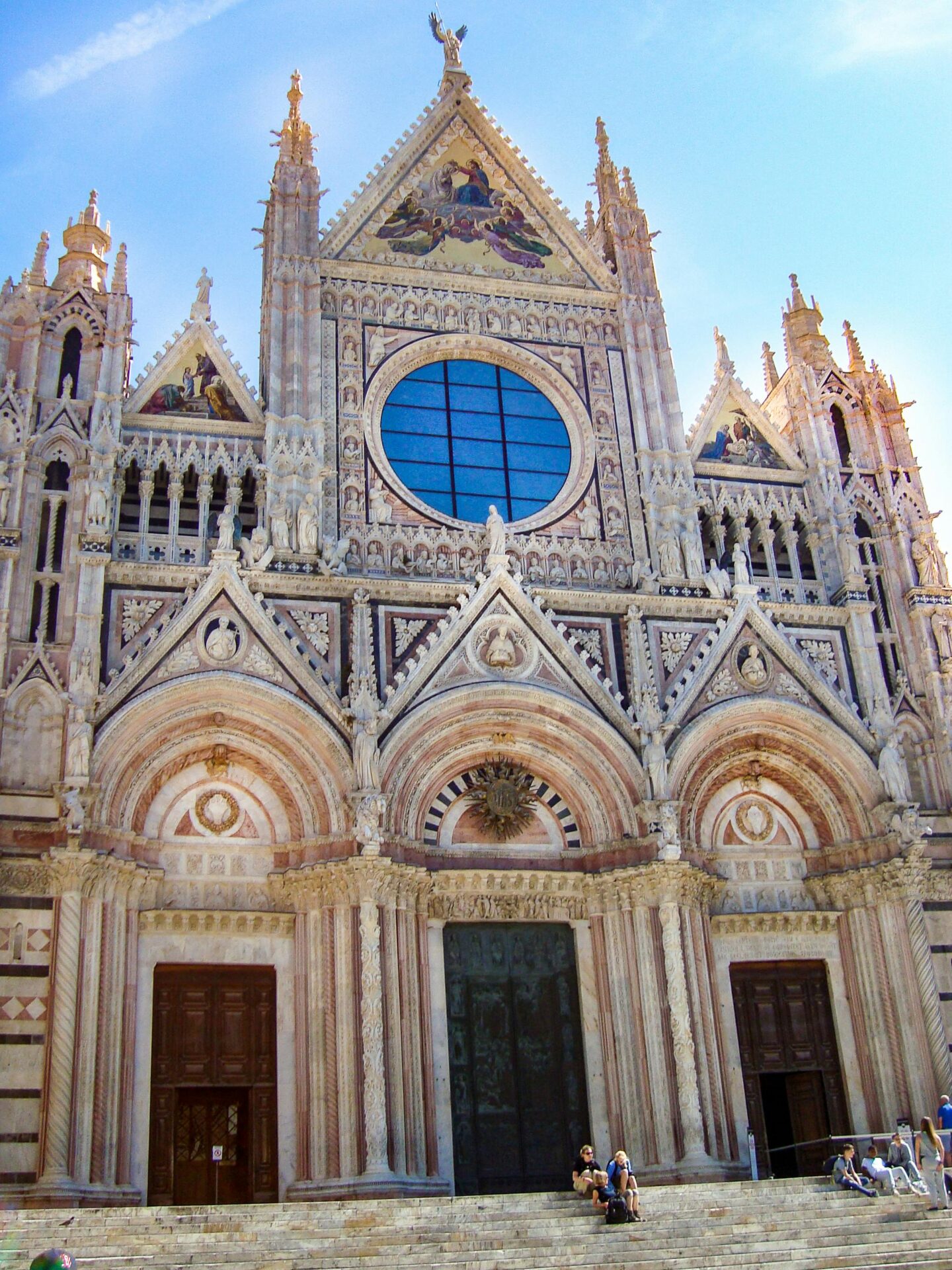
Panoramic Vistas: Torre del Mangia and Beyond
The red-brick Torre del Mangia offers some of the most breathtaking views in all of Tuscany. Standing tall above Piazza del Campo, this medieval tower rewards those who brave its steps with unforgettable panoramas.
Climbing the Tower
I still remember my first climb up Torre del Mangia—400 steps of anticipation! The tower rises 87 meters above Siena, making it one of Italy’s tallest medieval towers. Built between 1338 and 1348, it was designed to match the height of Siena’s cathedral.
The narrow staircase winds upward through cool stone passages. There are several landings where you can catch your breath and peek through small windows.
The tower’s name comes from its first bell-ringer, Giovanni di Balduccio, nicknamed “Mangiaguadagni” (earnings-eater) for his reputation of spending all his money on food.
Be prepared for a workout! I recommend wearing comfortable shoes and bringing water, especially during summer months.
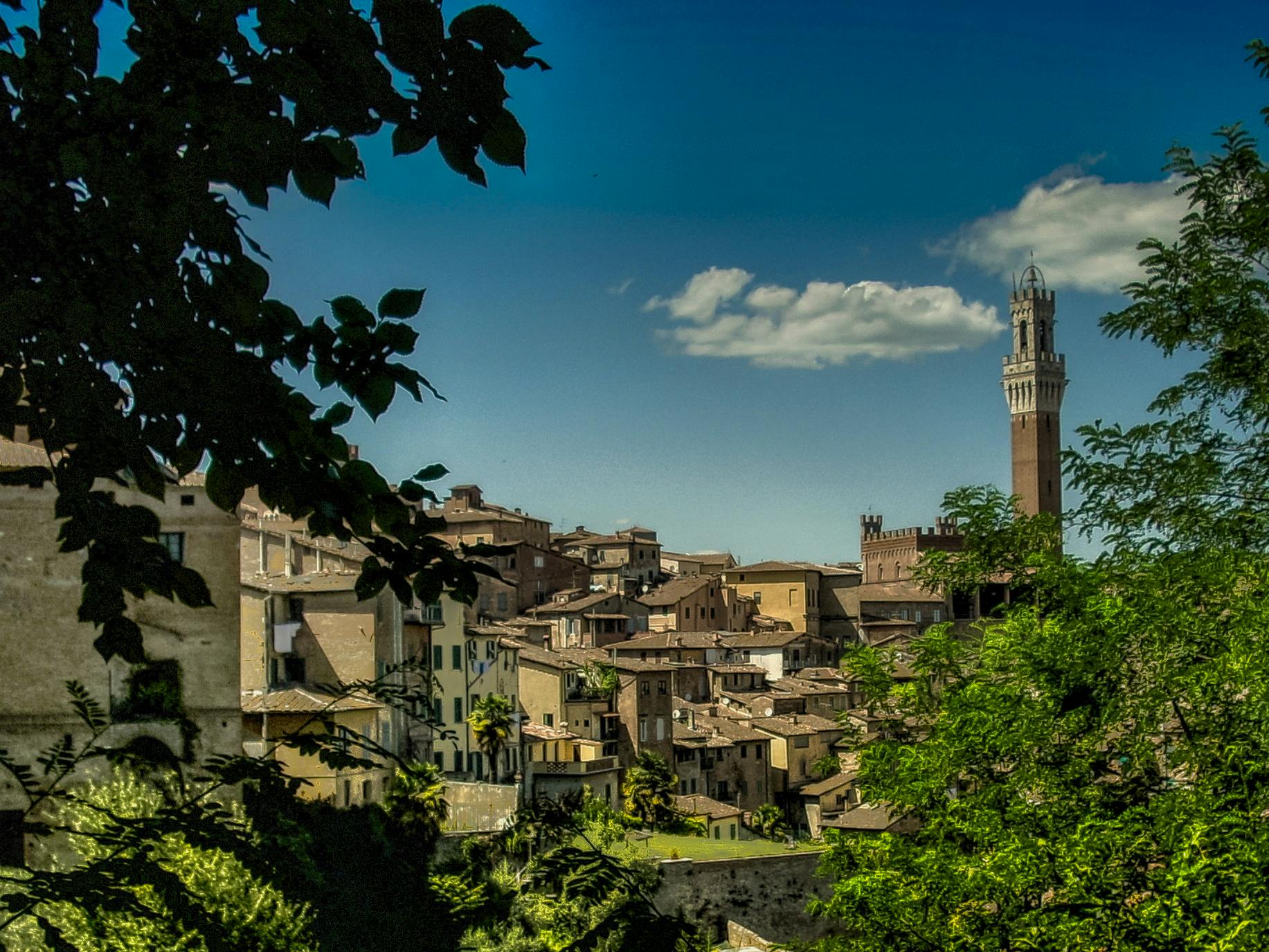
Views over Siena and Tuscany
Once I reached the top platform, the panorama literally took my breath away. The entire shell-shaped Piazza del Campo unfolds below, revealing its unique design that’s often missed at street level.
The red-tiled rooftops of Siena spread in all directions, with the striking black and white marble Siena Cathedral dominating the skyline. On clear days, I could see the rolling hills of Val d’Orcia to the south.
Looking northwest, the towers of San Gimignano are visible on the horizon—another medieval Tuscan gem. Sometimes I can even spot Florence in the distance on exceptionally clear days.
The views change dramatically with the seasons. Spring brings lush green landscapes, while summer showcases golden wheat fields. Fall offers a tapestry of reds and oranges across the countryside.
I recommend timing your visit for sunset when the warm light bathes the Tuscan landscape in a golden glow.
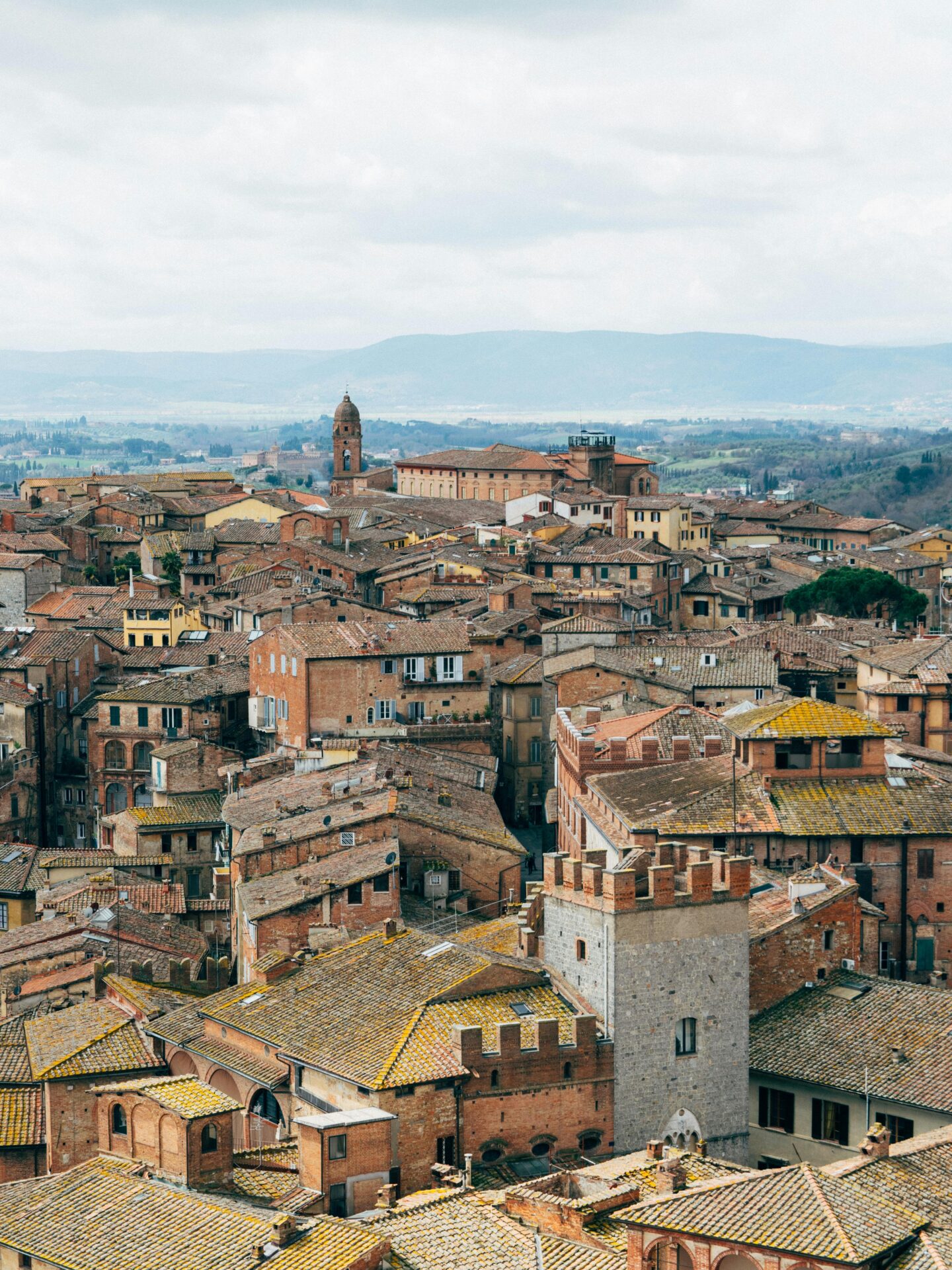
Siena’s Place in Tuscany and the World
Siena stands as a jewel in Tuscany’s crown, offering a perfect blend of history, art, and culture that draws visitors from around the globe. Its influence extends far beyond the curved walls of Piazza del Campo.
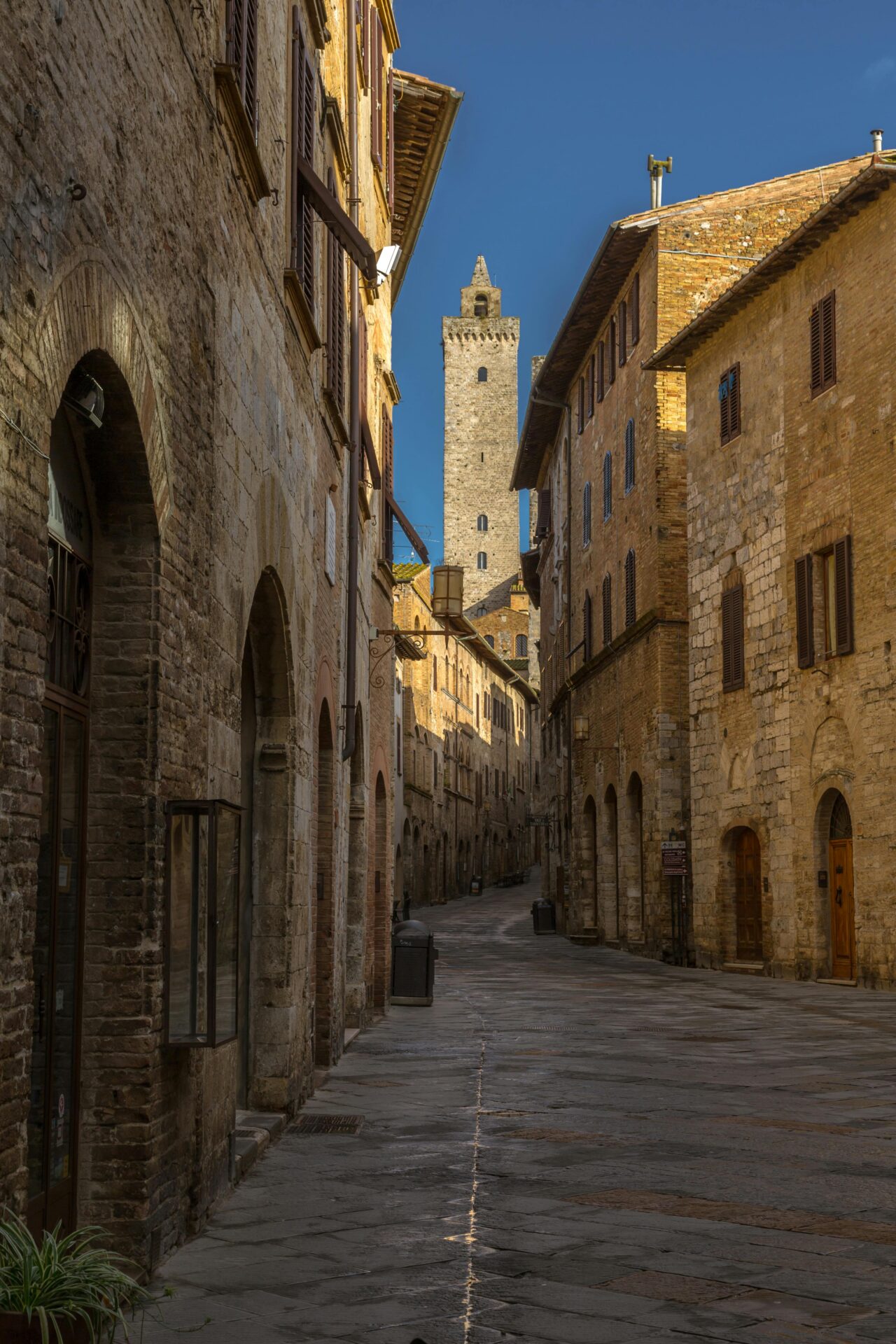
Siena and its Neighboring Wonders
When I visited Siena, I discovered it’s perfectly positioned among Tuscany’s most breathtaking attractions. Just a short drive away, the towering medieval skyscrapers of San Gimignano create an unforgettable skyline. This “Manhattan of the Middle Ages” offers the perfect day trip from Siena.
The wine regions surrounding Siena are world-class destinations themselves. I particularly enjoyed Montalcino, home to the famous Brunello wines, and Montepulciano with its noble Vino Nobile.
Don’t miss Bagno Vignoni, a unique thermal village where the main square is actually a large pool of steaming water! It’s one of those hidden gems that makes Tuscany special.
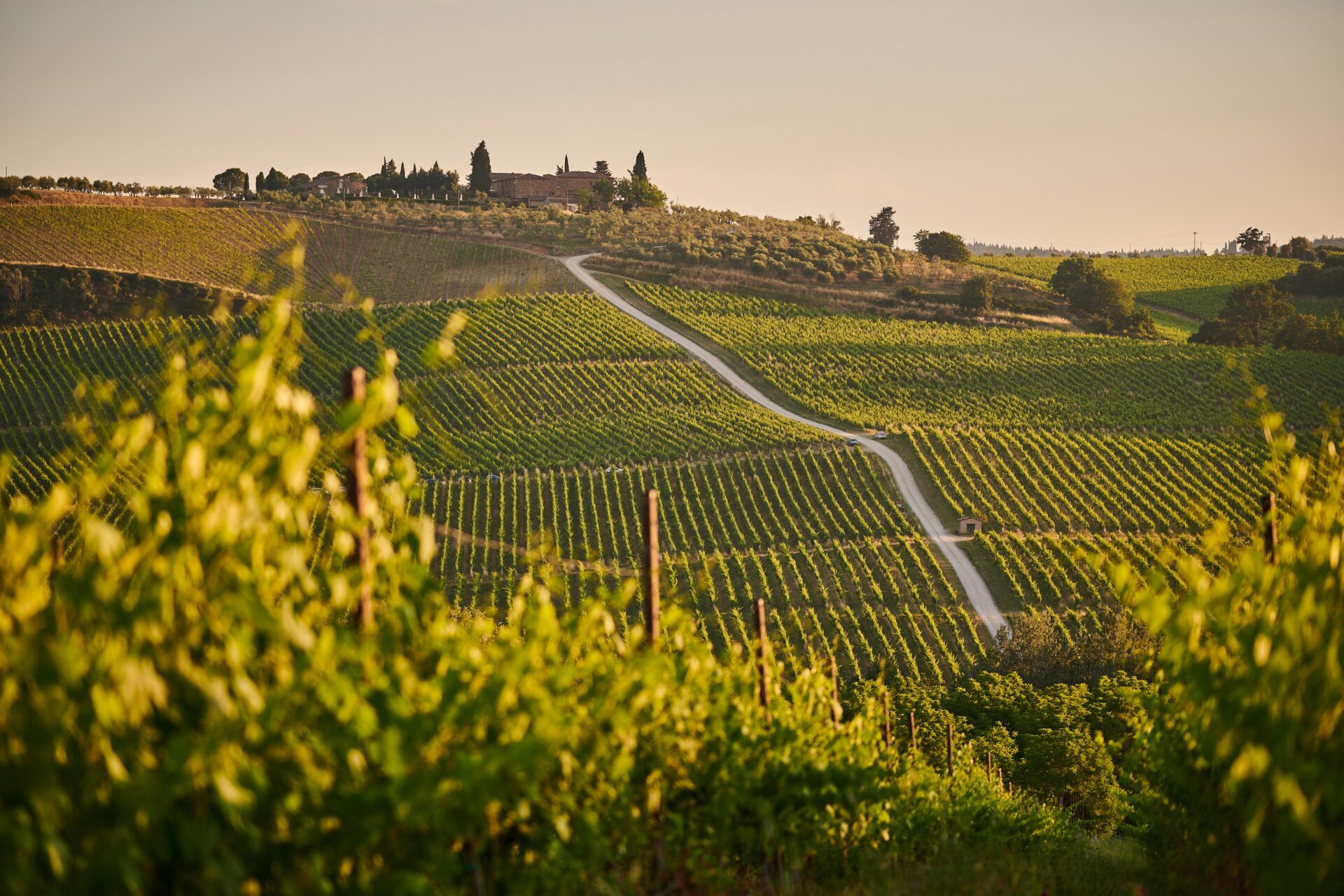
Tuscany’s Palette: Wine, Villages, & Landscapes
The UNESCO-protected Val d’Orcia spreads south of Siena like a painting come to life. I’ve spent hours driving its cypress-lined roads. I’ve also spent time photographing rolling hills that seem designed specifically for postcards.
Wine is the lifeblood of the region. Try the crisp white Vernaccia di San Gimignano after a hot day of sightseeing. It’s refreshing and distinctly Tuscan.
While Florence may claim Tuscany’s spotlight with attractions like the magnificent Piazza della Signoria, I find Siena offers a more authentic experience. The pace is slower, the crowds thinner, and the connections to medieval life stronger.
Siena balances its historic charm with modern comforts, making it my ideal base for exploring all Tuscany has to offer.

